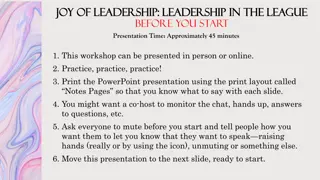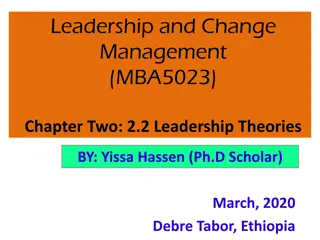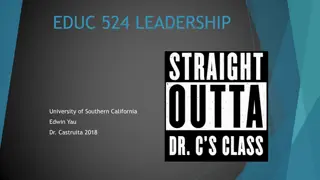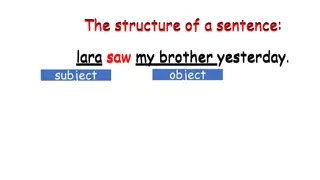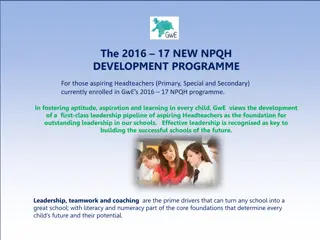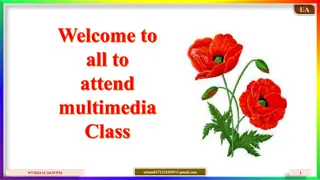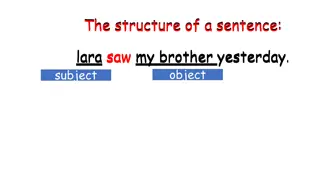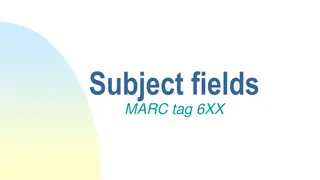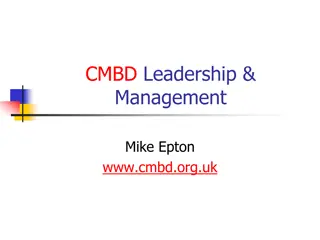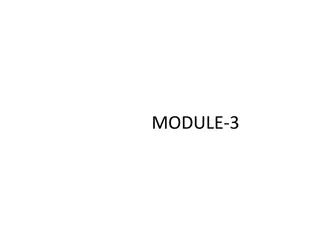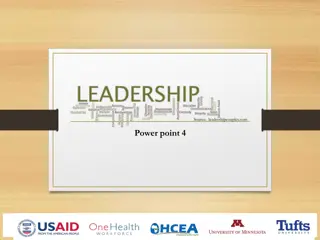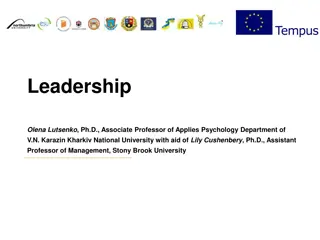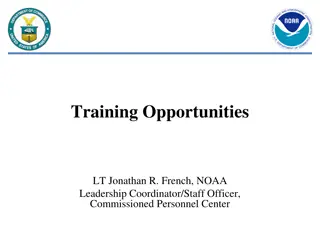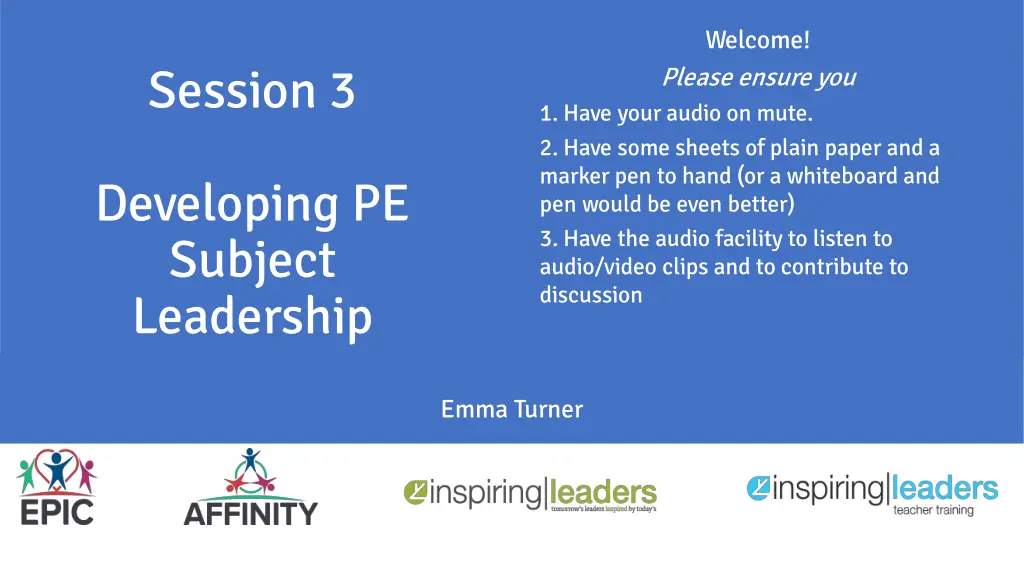
Developing PE Subject Leadership - Essential Tips and Strategies
Enhance your PE subject leadership skills by following key steps like self-evaluation, analyzing evidence, and ensuring effective practices. This comprehensive guide covers self-assessment, resource management, and fostering a shared vision within your school community for successful subject leadership in Physical Education.
Download Presentation

Please find below an Image/Link to download the presentation.
The content on the website is provided AS IS for your information and personal use only. It may not be sold, licensed, or shared on other websites without obtaining consent from the author. If you encounter any issues during the download, it is possible that the publisher has removed the file from their server.
You are allowed to download the files provided on this website for personal or commercial use, subject to the condition that they are used lawfully. All files are the property of their respective owners.
The content on the website is provided AS IS for your information and personal use only. It may not be sold, licensed, or shared on other websites without obtaining consent from the author.
E N D
Presentation Transcript
Welcome! Please ensure you Session 3 1. Have your audio on mute. 2. Have some sheets of plain paper and a marker pen to hand (or a whiteboard and pen would be even better) 3. Have the audio facility to listen to audio/video clips and to contribute to discussion Developing PE Subject Leadership Emma Turner
What have we got so far?
Current Picture Brief description Evidence (including source)/findings Actions Proudest moment/biggest achievement Knowledge of achievement in EYFS Knowledge of achievement in KS1 Knowledge of achievement in Ks2 Current physical resources available to develop the subject Current human resources available to develop the subject (include meeting times) Areas of spending and impact so far How well is vision for your subject embedded and understood by staff, pupils and parents/stakeholders? Personal development as a successful leader
What did your self evaluation tell you? (6 Sections)
Our Evidence Self Evaluation Current picture snapshot Results/findings from the toolkit Own knowledge M&E from other colleagues Best practice guidance from subject associations/professional bodies
How do I know if what I am looking at is effective practice? (1) Use the National Curriculum document Nationally produced data comparison documents for statutory tests Data info from your school data and assessment manager/coordinator Speak to colleagues in other year groups Other subject area evidence is there a discrepancy? Teacher confidence is high Books/evidence from other schools
How do I know if what I am looking at is effective practice? (2) Are teacher planning and pupil outcomes linked? (are pupils actually achieving what is set out in the curriculum plans?) evidence from previous and subsequent year groups evidence from parallel classes Achievement of pupil groups in other subjects (speak to other subject leaders) Parental satisfaction Pupil attitudes towards the subject Feedback has impact on future pupil outcomes
Action Planning A blend of knowledge, strategy and response
What makes a good action plan? Task Who is the audience for an action plan?
If you collected an action plan from a highly effective subject leader s folder, what might you expect the format and overall presentation to look like?
Suggested Headings for Action Planning Link to School Development Plan: Current Picture Planned action Intended outcome Date(s) to be completed Person Responsible Cost Success Evidence Monitoring
Key Headings for Action Planning Link to SDP: Current Picture Planned action Intended outcome Date(s) to be completed Person Responsible Cost Success Evidence Monitoring
Key Headings for Action Planning Link to SDP: Current Picture Planned action Intended outcome Date(s) to be completed Person Responsible Cost Success Evidence Monitoring
Key Headings for Action Planning Link to SDP: Current Picture Planned action Intended outcome Date(s) to be completed Person Responsible Cost Success Evidence Monitoring
Key Headings for Action Planning Link to SDP: Current Picture Planned action Intended outcome Date(s) to be completed Person Responsible Cost Success Evidence Monitoring
Key Headings for Action Planning Link to SDP: Current Picture Planned action Intended outcome Date(s) to be completed Person Responsible Cost Success Evidence Monitoring
Key Headings for Action Planning Link to SDP: Current Picture Planned action Intended outcome Date(s) to be completed Person Responsible Cost Success Evidence Monitoring
Key Headings for Action Planning Link to SDP: Current Picture Planned action Intended outcome Date(s) to be completed Person Responsible Cost Success Evidence Monitoring
Key Headings for Action Planning Link to SDP: Current Picture Planned action Intended outcome Date(s) to be completed Person Responsible Cost Success Evidence Monitoring
To develop effective PE team -> class teacher feedback system for PE assessment throughout the school Discussion at LK pm meeting about PE assessment. PE meeting on PE feedback and assessment PE meeting Discussion with class teachers Assessment process agreed. PE feedback and assessment refined in line with schools needs Teachers informed of pupils learning progress and behaviour during PE lessons Assessment forms into V drive Feedback system (red book) monitored and reviewed. PE Co-ordinator to check system is effective and easy to use. PE Co-ordinator set on feedback format Assessment system to be analysed at end of the year To continue to develop clubs provision and competitive sports opportunities within the school Wide and varied clubs program provided. Timetable of clubs to continue the overall provision and to increase provision for key stage One. Collect data, analyse and compare results from previous years. Pupil questionnaire End of Summer term 2020 1 afternoon to analyse the data at the end of year To try to expand the variety of clubs available to children from all years. Analysis at children s voice survey used to plan this year s extracurricular activities Children s voice question used to provide new clubs Continue to be involved in variety of competitions/festivals that are available Children to be given the opportunity to be involved in competitive sports in key stage 2 To increase girls participation in extracurricular sport activities and competitive sports Increased number of girls taking parts in sport afterschool clubs. To develop a girls focused sport afterschool club Club registers End of Summer term 2020 PE premium funds to cover costs to run an extra afterschool club Competition team sheets Increased number of girls taking parts in sports fixtures. To sign in to girls sports leagues.
Why do I need to write things up? Provides evidence for The school s self evaluation Accountability evidence e.g. re: pupil premium, staffing, effectiveness of paid interventions, impact of staff training, effectiveness of investment in resources Evidence of improvement over time/trends Evidence of a proactive and self evaluative approach Tracking of vulnerable pupil groups Sharing findings effectively and professionally with a range of audiences
Do I report an individual class or teachers information? Bring together the general strengths and areas for development using all your findings from that particular type of monitoring activity or wider evidence base. This can be circulated to ALL staff to feedback areas of strength across the school. These CAN be put in shared areas/folders. Keep any raw data e.g. Work children have done as part of a pupil interview in your file, clearly referenced with the date, year group, class, purpose/rationale and type of monitoring activity.
Headings for use in any M&E Report Rationale: Why the monitoring is being carried out Focus: What the monitoring activity will be focusing on Main Findings More descriptive and detailed than next section, discusses overall trends across the school/key stage or group Strengths and Areas for Development bullet pointed, clear, concise Recommendations/Actions (should have clear timescales for completion which can be tracked forward into subject Action Plan)
Aspects I should be aware of for monitoring reports oAchievement of vulnerable groups including: oPPM, G&T/GD, SEND, gender differences, underachieving pupils analysis of intersections/multiple vulnerabilities oPrevious investment in my subject area, including training, resourcing, recruitment oCurriculum coverage (statutory requirements) oParity between parallel classes or mixed age classes oDifferentiation/provision for all learners oFeedback and impact of feedback
What should I aim make reference to in my write ups? How your monitoring is linked to whole school targets from the SDP Achievement (progress and attainment) of pupils (inc vulnerable groups) and any inequality or disparity Impact of staff training or recent recruitment/deployment designed to achieve a certain impact/effect e.g. The progress of vulnerable pupil groups in reading since recent staff training on introducing effective approaches to guided reading. The impact of teaching and learning on pupil outcomes planning, feedback, assessment, teaching, pupil progress Any significant changes within your subject either statutory, national or local arrangements
How do I know if what I am looking at is effective practice? Use the National Curriculum document Nationally produced data comparison documents for statutory tests Data info from your school data and assessment manager/coordinator Speak to colleagues in other year groups Teacher confidence is high Are teacher planning and pupil outcomes linked? (are pupils actually achieving what is set out in the curriculum plans?) Books/outcomes from previous and subsequent year groups Books/outcomes from parallel classes Achievement of pupil groups in other subjects (speak to other subject leaders) Parental satisfaction Pupil attitudes towards the subject Feedback has impact on future pupil outcomes
Features of effective monitoring evaluations Easy to read Not overly wordy but are highly concise, precise and demonstrate efficiency and efficacy Make clear and specific links to achievement, including hard and soft data Use evaluative language and statements e.g. Describe impacts not actions Have clear recommendations for future actions and clear timeframes for achievement, as well as clear resource costings (including human resources/cover) Have achievable/prioritised areas for improvement Comment succinctly on impacts of investments such as staff training or resource purchases. Are based on a sound understanding of practice and achievement at all levels (EYFS Y6 within a subject/area)
A map for the strategic direction What is the purpose of the action plan Shared understanding Record of work/ aide memoire Working document
Any questions? Next steps: Undertake self evaluation Write subject on a page Toolkit assessment Collate evidence Write action plan Implement SUBJECT LEADER SPECIALIST SESSIONS TO LEAD

